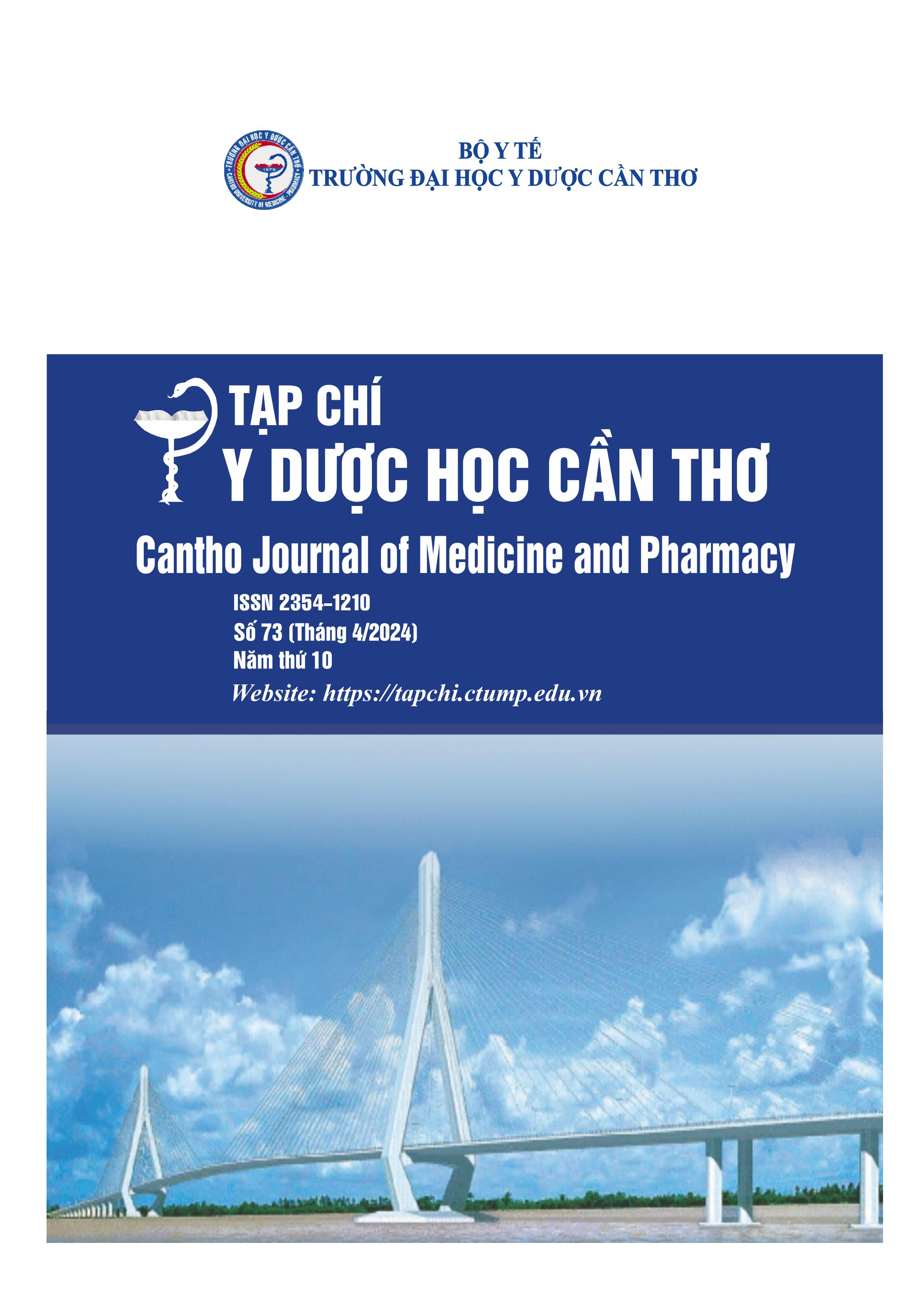SURGICAL SITE INFECTION AND FACTORS RELATED TO PATIENTS UNDERGOING ELECTIVE ABDOMINAL SURGERY AT CA MAU GENERAL HOSPITAL
Main Article Content
Abstract
Background: The issue of a higher risk of infection in abdominal surgery needs more attention. Objectives: To describe the characteristics of surgical site infections in elective abdominal surgery patients at Ca Mau General Hospital and evaluate some factors related to surgical site infections in elective abdominal surgery patients from 2022 to 2023. Materials and methods: A crosssectional descriptive study was conducted on abdominal surgery patients enrolled in the program at Ca Mau General Hospital. Results: The mean age was 56.8 ± 12.8; with 43.8 % of patients having no comorbidities. Clean surgery accounts for 65.7%; clean-contaminated surgery accounts for 28.8%; contaminated surgery accounts for 5.5%. Abdominal surgical site infection rate is 13.7%. Patients with body mass index < 23 have a lower rate of surgical site infection than patients with mass index ≥ 23 (OR= 1.415; 95%CI: 0.027- 0.798). Laparoscopic surgery has a lower rate of surgical site infection than open surgery (OR = 0.189; 95%CI: 0.046-0.774). Short surgery time ≤ 120 minutes had a lower rate of surgical site infection than the group with long surgery time > 120 minutes (OR = 0.11; 95% CI: 0.25-0.491). This difference is statistically significant p<0.05. Conclusions: The rate of surgical site infection after sessions of abdominal surgery is 13.7%. This ratio was correlated with patient mass index, type, method, and duration of surgery.
Article Details
Keywords
Surgical site infection, SSI, Gastrointestinal surgery
References
2. World Health Organization. Global guidelines for the prevention of surgical site infection, World Health Organization Geneva. 2018. 29-32.
3. Nguyễn Thị Bích Ngọc, Nguyễn Hoàng, Trương Quang Trung. Đánh giá tình trạng nhiễm khuẩn vết mổ và một số yếu tố liên quan bệnh nhân phẫu thuật ống tiêu hóa tại BV Thanh Nhàn. Tạp Chí Y học Việt Nam. 2021, 507(1), 161-165. https://doi.org/10.51298/vmj.v507i1.1347.
4. Phạm Thị Lan, Trịnh Thị Thoa, Nguyễn Vũ Hoàng Yến và cộng sự. Nhiễm khuẩn vết mổ và các yếu tố liên quan tại Bệnh viện Đại học Y dược TPHCM. Tạp Chí Y học Việt Nam. 2023, 524(2), 349- 354. https://doi.org/10.51298/vmj.v524i2.4892.
5. Trần Anh Quân, Nguyễn Thị Tuyến và cộng sự. Thực trạng nhiễm khuẩn vết mổ sau phẫu thuật tiêu hóa và một số yếu tố liên quan tại khoa phẫu thuật tiêu hóa Bệnh viện Đa khoa Xanh Pôn. Tạp Chí Y học Việt Nam. 2022, 514(1),302-305.https://doi.org/10.51298/vmj.v514i1.2570.
6. Nguyễn Thị Vân Anh, Đỗ Sỹ Long và cộng sự. Đánh giá tình trạng nhiễm khuẩn vết mổ tại khoa Phẫu thuật Gan Mật Tụy-Bệnh viện Trung ương Quân đội 108. Journal of 108 - Clinical Medicine and Phamarcy. 2022, 17(7), 133-139. https://doi.org/10.52389/ydls.v17i7.1563.
7. Phạm Văn Tân. Nghiên cứu nhiễm khuẩn vết mổ các phẫu thuật tiêu hóa tại khoa ngoại Bệnh viện Bạch mai. Luận văn tiến sĩ y học, Học viện Quân y, 2016, 175.
8. Isik O, Kaya E, Sarkut P, Dundar HZ. Factors Affecting Surgical Site Infection Rates in Hepatobiliary Surgery. Surg Infect (Larchmt). 2015, 16(3), 281-6. https://doi.org/10.1089/sur.2013.195.
9. Nguyễn Văn Hoàn, Bùi Văn Hưởng. Thực trạng và một số yếu tố nguy cơ nhiễm khuẩn vết mổ tại Bệnh viện Quân y 110 năm 2019. Journal of 108 - Clinical Medicine and Pharmacy. 2019, 14(6), 122-127.


